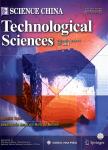Microstructural characteristics of cold-rolled Zr-2.5Nb alloy annealed near the monotectoid temperature
Microstructural characteristics of cold-rolled Zr-2.5Nb alloy annealed near the monotectoid temperature作者机构:College of Materials Science and EngineeringChongqing University of TechnologyChongqing 400054China College of Materials Scienceand EngineeringChongqing UniversityChongqing 4000044China
出 版 物:《Science China(Technological Sciences)》 (中国科学(技术科学英文版))
年 卷 期:2018年第61卷第4期
页 面:558-566页
核心收录:
学科分类:080503[工学-材料加工工程] 08[工学] 080502[工学-材料学] 0805[工学-材料科学与工程(可授工学、理学学位)] 0802[工学-机械工程] 080201[工学-机械制造及其自动化]
基 金:supported by the National Natural Science Foundation of China(Grant Nos.51401040,51371202,51531005&51421001) the Fundamental and Cutting-Edge Research Plan of Chongqing(Grant No.cstc2017jcyjAX0114)
主 题:Zr alloy dual phase microstructure rolling recrystallization electron backscatter diffraction
摘 要:A dual-phase Zr-2.5 Nb alloy was rolled at room temperature to 50% reduction and then annealed at two temperatures(560 and580°C) near the monotectoid temperature. X-ray diffraction, electron channeling contrast imaging and electron backscatter diffraction techniques were jointly used to characterize microstructural characteristics developed in the as-rolled and annealed specimens. Results show that plastic deformation occurs in both bulk α-Zr grains and thin β-Zr films during rolling, allowing large lattice strains to be accumulated in β-Zr and active dislocation slip(especially the prismatic áa?slip) to be initiated in α-Zr. During subsequent annealing at 580°C, the prior β-Zr films are transformed into submicron β-Zr particles, which lose coherency(the Burgers orientation relationship) with surrounding α grains. In the specimen annealed at 560°C, however, the prior β-Zr films are found to be decomposed into nanoscale β-Nb particles. In both the annealed specimens, the β-Zr and the β-Nb particles appeared to be linearly distributed along the rolling direction. Two types of α structures, i.e., small equiaxed crystallites formed by recovery of dislocation structures and coarse bamboo-like recrystallized grains, are revealed in the annealed specimens. Effective boundary pinning due to the dense β-phase particles is demonstrated to play a key role in forming such unusual bamboo-like grains.



